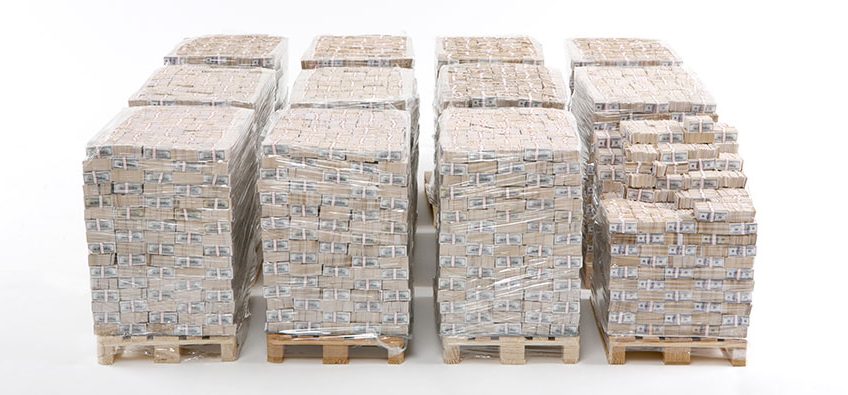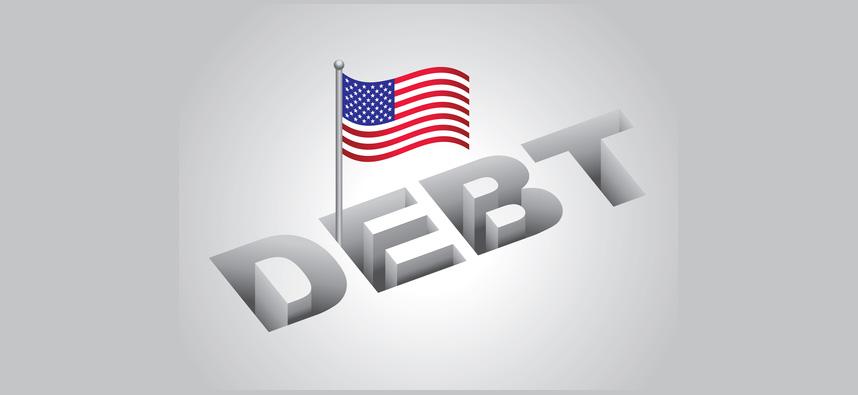
Government Debt and Gold

The US government keeps its book not on the calendar year, but on a “fiscal year” (FY) that begins on October 1 and ends on September 30. That means its FY2019 will end in just over two weeks, and then FY2020 begins.
Some of the financial press is reporting that it looks like FY2019 will result in a one trillion dollar federal deficit.
But there is no need to wait until the end of the year to see. Treasury debt for the year passed a trillion dollars earlier this month. Already, in the middle of the eleventh month of FY2019, the deficit is $1,023,500,000,000.
At the same time, the visible portion of the US debt has risen to $22,539,500,000,000.
How will all this debt ever be paid?

It won’t be paid. In fact, the only way the US bonds (the government’s I.O.U.s) that come due today can be paid is by the issuance of new I.O.U.s tomorrow.
It’s like paying your VISA card by borrowing on your MasterCard.
Obviously, this can’t go on forever. So, historically governments attempt to rid themselves of their debts in one of several ways.
One of the most common means that governments employ is to simply print more currency. As long as the monetary system consists of government-issued money unbacked by anything tangible like gold, it can print as much money as it takes to pay its debts.
It wrecks the functioning of the economy when it does so. It destroys capital and enforces financial ruin on its citizenry along the way. But governments choose this path over and over again.
And in fact, this old approach to the government’s spending and debt problem has been dressed up in new garb for 21st Century Americans. If you watch the debates and the promises of the presidential candidates, and if you read the position papers of their supporters you will run across the term “Modern Monetary Theory.”

Modern Monetary Theory asserts that debt doesn’t matter, and governments can spend endlessly as long as they have a monopoly on the money system. To mix the metaphors, it’s the same old snake oil in new bottles.
Another popular alternative of governments is to simply refuse to pay its debts in whole or in part. Sometimes a government will admit candidly that it can’t pay its debts and that it is very sorry.
That’s when the people sharpen their pitchforks, grab torches, and head for the castles.
At other times governments announce that their debts aren’t actually debts at all. If its debts aren’t real obligations, they need not be repaid.
Already government apologists say this about the promises the government has made about things like Social Security. They say these aren’t “real” debts. But of course, when they create these programs, they employ language that if used by a private business would be considered nothing less than actionable fraud. For example, our government uses terms like “insurance,” “reserves,” and “trust funds” for Social Security. But the money has all been spent.
I suspect that if you have paid into Social Security all your life on the promise that your benefits will materialize when you need them, you damn well consider it an actual debt.
But just so you know, the government looks at it differently.
With these prospects in mind, it’s good that more Americans are thinking about owning gold. We are in an era of churning stock markets, free-stuff-for-everybody politicians, and rumors of wars.
You need to protect yourself and your family with gold and silver. The government can default on its debts. It can destroy the value of your dollar savings by printing more dollars.
But it can’t print more gold and silver.
So, where do you start?
Start with us. Call or stop by. We’re here to help. We’ve been here a long time. Our professionals will take time to answer all your questions and help you get started.
